Quarterly report (July-Sept) on anonymous sources in newspapers
South Asia Check / October 5, 2021

During the past three months—between July 1 and September 30, 2021—among the five major national dailies that we monitored, Nagarik has used the most number of anonymous sources in its front page reports. It used a total of 223 anonymous sources in the front page reports during the period.
South Asia Check has, for the past several years, been tracking the use of anonymous sources in the news reports published on the front pages of six leading national dailies of Nepal – Kantipur, Nagarik, Annapurna Post, The Kathmandu Post, The Himalayan Times and Republica. While the first three are Nepali language newspapers, the last three are English dailies. Since Republica remains out of print since mid-April last year, this report is based on the five newspapers.
Following Nagarik, the dailies using the most number of anonymous sources were Kantipur, The Kathmandu Post, Annapurna Post and The Himalayan Times, respectively. The Himalayan Times used the least number of anonymous sources in the given period. In the three months, it used 14 anonymous sources in its news reports.
During the three months, the front page reports of the five dailies used altogether 619 anonymous sources.
Most of the news reports on the front pages of the newspapers were about politics. Anonymous sources were mostly used in politics-related news reports (in 367 instances) during the period. Nagarik and Kantipur were the first and second national dailies respectively using the highest numbers of anonymous sources in their political reports; Nagarik used anonymous sources in 191 instances and Kantipur in 86 instances in such reports.
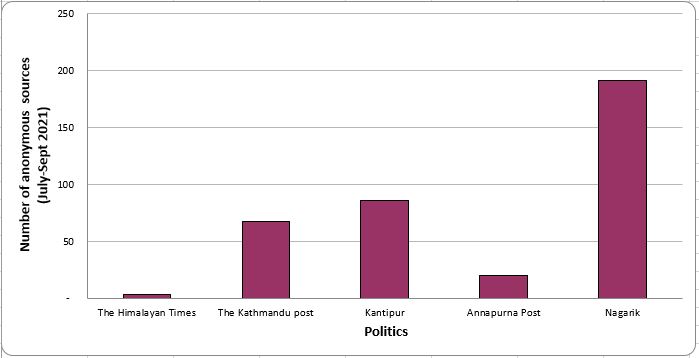
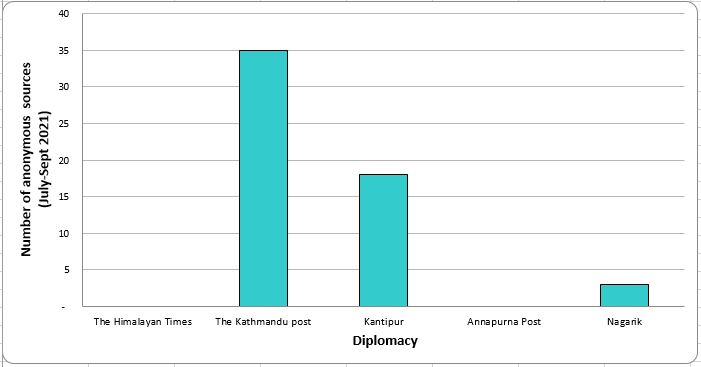
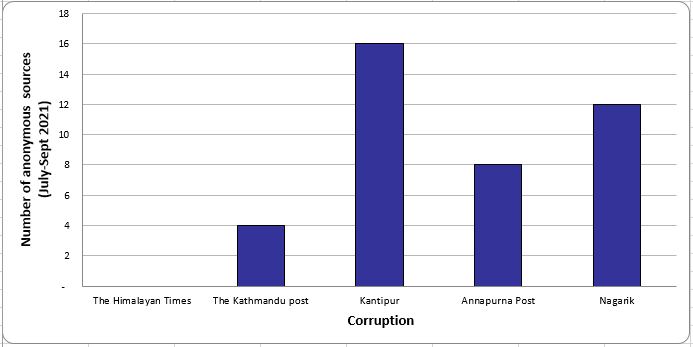
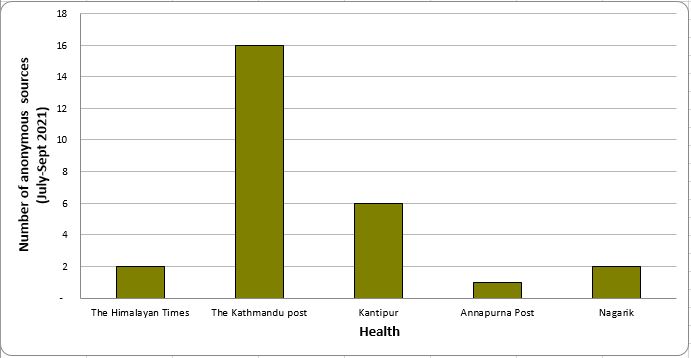
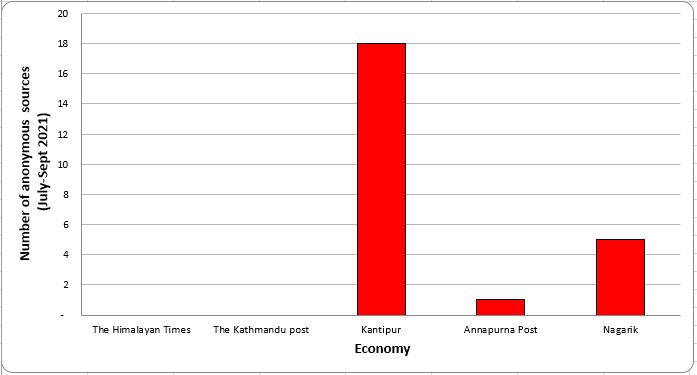
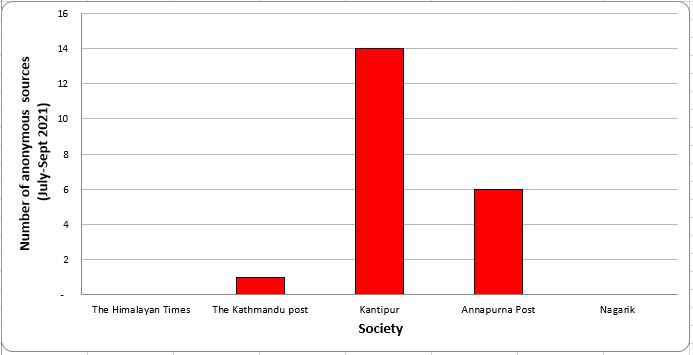
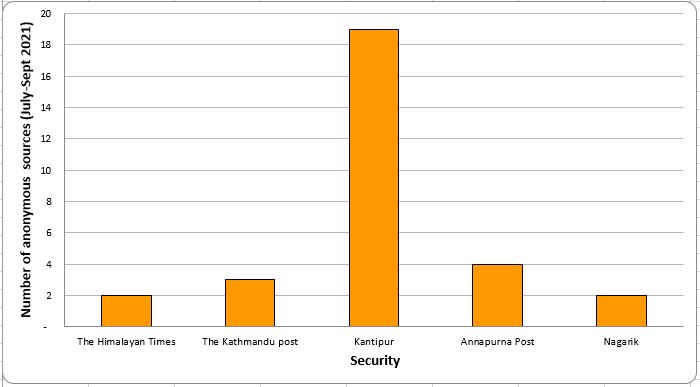
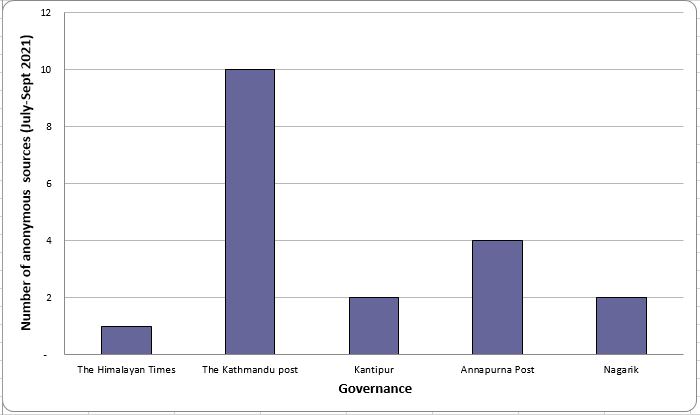
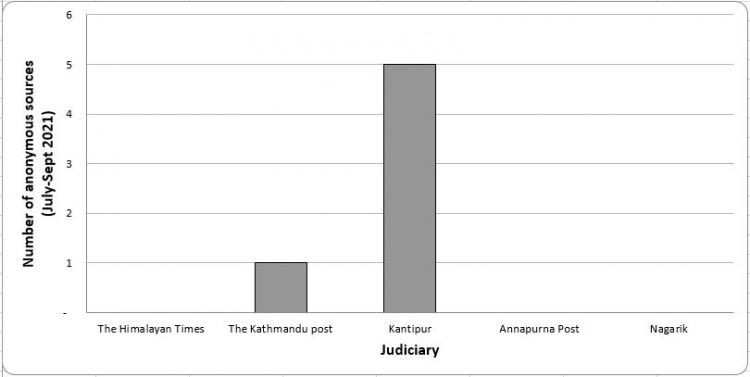
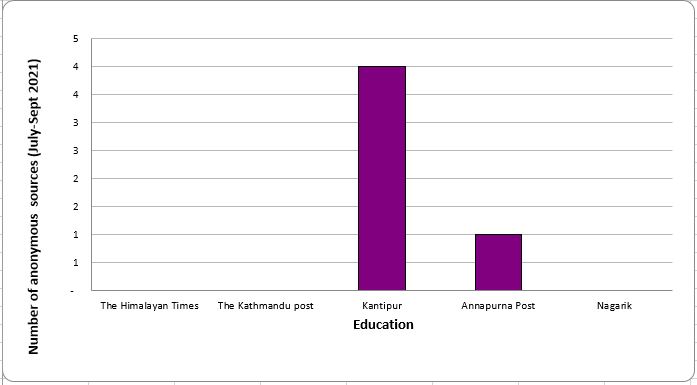
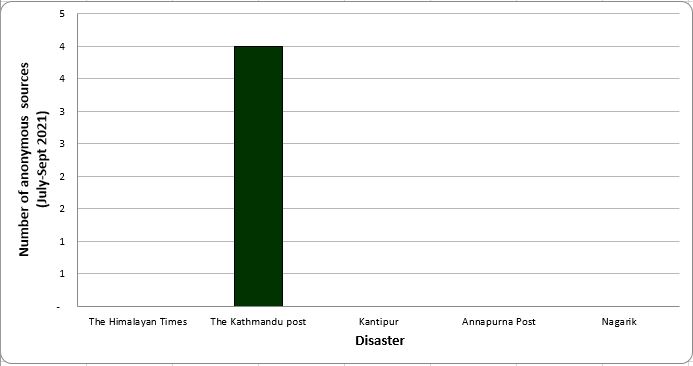
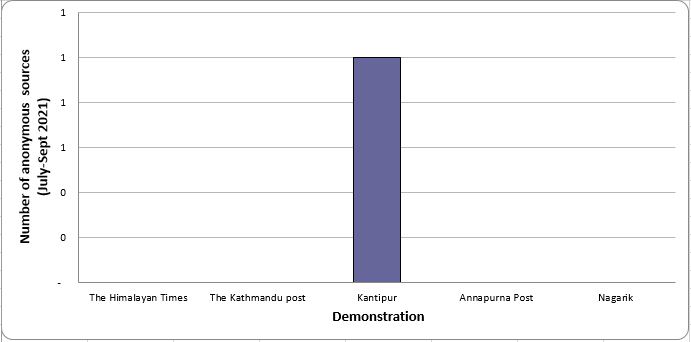
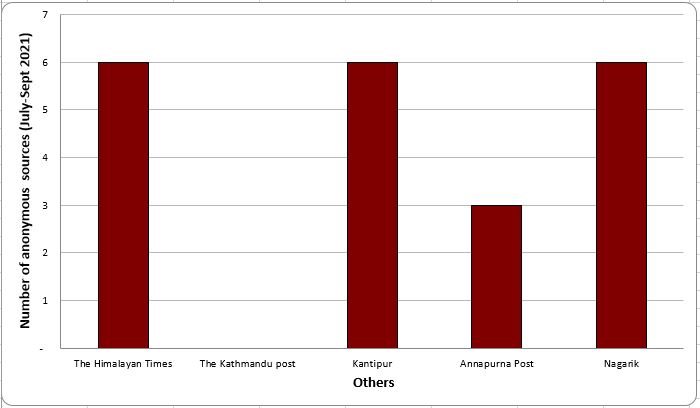
Diplomacy is the second topic in the Nepali newspapers where anonymous sources are used in highest numbers. During this period, anonymous sources were used in 56 instances in diplomacy-related news reports in the five newspapers.
Quoting anonymous sources in news reports is not an abnormal practice. Regarding the use of anonymous sources in news reports, ‘Journalist’s Code of Conduct, 2016 (first amendment 2019)’ issued by the Nepal Press Council states the following:
“Source should be quoted for the reliability of the news. However, while quoting the source, the name and identity of such source should be kept confidential so as to avoid any serious damage to the source.”
The identity of news source should be protected only if revealing the source’s identity can cause serious harm to him/her.
But some news reports published during this period have quoted anonymous sources even when there is no apparent need to do so.
For example, a report headlined ‘Vaccination is the primary condition for foreign employment’ published in a Nepali-language daily states:
“The UAE is unlikely to take in Nepali workers until they are vaccinated,” a Nepali working there said, adding, “UAE’s primary condition is vaccine.”
Another report titled ‘Thakur removed from chairman’s post’ in a Nepali-language daily states: “Thakur and Mahato and others close to them will not lose their lawmaker positions as long as they are ordinary members of the JSP [Janata Samajbadi Party],” claimed a source at the [Election] commission.
Similarly, a report in an English-language daily headlined ‘At COVID-19 call centre, most of the queries of late are about vaccines’ states: “When vaccines are arriving, people now want to know where and when vaccines are being administered and which types of vaccines are being given to the people,” a call operator said.
Another report titled ‘A new train last year was welcomed with much fanfare. It never ran’ in an English-language daily states:
“The government can recruit staffers by itself on contract, but a commission representative needs to be involved in the recruitment process. In the case of permanent staffers, the commission does the recruitment,” an official of the commission told the Post last year.
The anonymous sources used in the aforementioned examples appear unjustified because disclosing the sources’ identities may not cause serious harm to the sources.
Click here to download the spreadsheet of anonymous sources prepared by South Asia Check.
This material is copyrighted but may be used for any purpose by giving due credit to southasiacheck.org.
Comments
Latest Stories
- In Public Interest Covid-19 cases are low, but that’s not an excuse to avoid vaccination
- In Public Interest What is BF.7, the sub-variant that has the world by its grip?
- In Public Interest Threat of a new Covid-19 wave looms large amid vaccine shortage in Nepal
- In Public Interest As cases decline, Covid-19 test centres in Kathmandu are desolate lot
- In Public Interest Dengue test fee disparity has patients wondering if they’re being cheated
- In Public Interest As dengue rages on, confusion galore about what it is and what its symptoms are. Here’s what you need to know
In Public Interest
 Covid-19 cases are low, but that’s not an excuse to avoid vaccination
The Pfizer-BioNTech bivalent vaccines authorised by the Nepal Government provide better protection a...
Read More
Covid-19 cases are low, but that’s not an excuse to avoid vaccination
The Pfizer-BioNTech bivalent vaccines authorised by the Nepal Government provide better protection a...
Read More
- What is BF.7, the sub-variant that has the world by its grip?
- Threat of a new Covid-19 wave looms large amid vaccine shortage in Nepal
- As cases decline, Covid-19 test centres in Kathmandu are desolate lot
- Dengue test fee disparity has patients wondering if they’re being cheated
- As dengue rages on, confusion galore about what it is and what its symptoms are. Here’s what you need to know